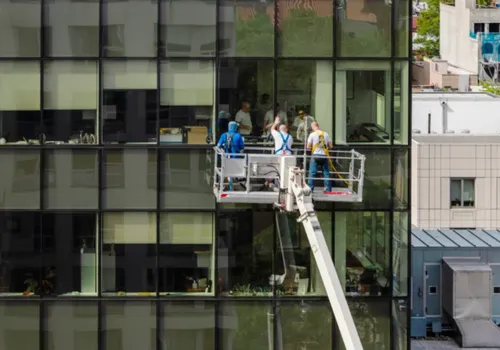
The elimination of a long-standing energy efficiency tax deduction may severely undermine efforts to convert and upgrade financially distressed commercial buildings, industry experts warn.

Signed into law on July 4 by President Donald Trump, the new 940-page domestic policy bill officially sunsets Section 179D — a federal deduction credited with helping property owners invest in energy-efficient upgrades and reposition obsolete buildings.
“The deduction has played an underappreciated role in revitalizing distressed assets — particularly those languishing in default or under special servicing,” said Paul Williams, editor of Foreclosurepedia. “In many foreclosure scenarios involving office buildings, warehouses, or mixed-use commercial properties, energy efficiency upgrades were not just green virtue-signaling — they were crucial to stabilizing occupancy, increasing market valuation, and meeting compliance thresholds required by insurance carriers or municipalities.”
Section 179D allowed owners to deduct costs tied to high-efficiency HVAC systems, lighting upgrades, and other improvements, often serving as a financial backbone for broader renovations or conversions to residential or mixed-use space. With the deduction expiring June 30, 2026, stakeholders say there is now a vacuum in incentives that were critical for investment confidence.
“Larger commercial service firms [have] been eyeing the commercial sustainability space as a potential growth sector, particularly in light of record-high office defaults and an anticipated surge in building conversions,” Williams said. “With 179D off the table, the economic viability of such conversions is now in question.”
Williams emphasized that neither municipalities nor private lenders can offer a replacement for what the federal tax program provided: a standardized incentive structure that helped mitigate risk during financially sensitive periods such as foreclosure or bankruptcy.
“Commercial owners navigating bankruptcy or servicing agreements are unlikely to engage in new programs whose legal implications and accounting benefits remain untested,” he said.
Industry groups are calling on Congress to reinstate the tax break, warning that its loss threatens not only property revitalization, but also job growth across the trades, manufacturing, and engineering sectors.
“This critical deduction … supports job creation in the trades, engineering, and manufacturing,” stated the Sheet Metal and Air Conditioning Contractors’ National Association, in a joint letter with the International Association of Sheet Metal, Air, Rail, and Transportation Workers.
“For nearly two decades, Section 179D has served as an important tool for HVACR contractors and commercial building owners,” the Air Conditioning Contractors of America noted. “By allowing owners to deduct the cost of installing qualifying energy-efficient systems — such as high-performance HVACR units — the deduction lowers energy bills, reduces strain on the electric grid, and supports domestic energy independence.”
The repeal comes at a precarious time for the commercial real estate market, which continues to reel from post-pandemic shifts in office demand. As hybrid work solidifies and vacancy rates rise, conversions to residential, lab, or educational uses have become a key strategy for asset recovery in cities nationwide.
Section 179D was often a bridge between environmental compliance and financial viability — a rare policy that aligned sustainability with economic return. Its removal could delay or derail many projects already in the pipeline, industry leaders caution.
Experts also warn of a chilling effect on green building investments, just as cities and states ramp up their own energy efficiency mandates and carbon reduction goals. Without a reliable federal incentive, many owners may avoid voluntary upgrades that would otherwise benefit local infrastructure and sustainability efforts.
As lobbying groups prepare to urge lawmakers for a reversal, the outcome may determine whether distressed assets languish or rebound — and whether the momentum behind adaptive reuse and green retrofits can survive without federal support.
Originally reported by Robert Freedman in Construction Dive.